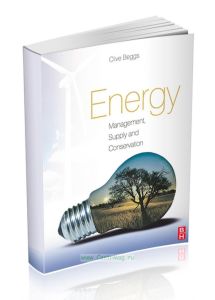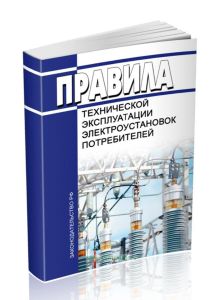- Артикул:00-01050775
- Автор: Clive Beggs
- ISBN: 978-0-7506-8670-9
- Обложка: Мягкая обложка
- Издательство: Elsevier Ltd (все книги издательства)
- Город: UK
- Страниц: 384
- Год: 2009
- Вес: 957 г
Energy. Management, Supply and Conservation/Энергетика. Управление, снабжение и энергосбережение
Книга на английском языке.
Energy - its source, security, price, and the efficiency of its use, are increasingly important issues for a diverse range of people. ‘Energy: Management, Supply and Conservation’ is a comprehensive text dealing with the theory and practice of the supply of energy, energy management and auditing, and the design of sustainable energy facilities. It considers the systems needed to create low-energy, sustainable buildings, including passive solar design, energy-efficient heating and air-conditioning, and combined heat and power. In addition the book includes substantial sections on renewable energy, transport energy, and energy economics. This new edition includes the latest in alternate-energy technology, for example wind turbines and solar panels as well as updating important energy values and statistics. The book’s readable style, along with its many figures, tables and worked examples make it an ideal text for courses on energy management, environmental engineering, architectural engineering and building services engineering. It will also be useful as a definitive handbook for professionals in the environmental, construction, utilities and facilities management sectors, as well as being of interest to those involved in sustainability economics and environmental policy making. Clive Beggs is Professor of Medical Technology at the University of Bradford. He is both a mechanical engineer and a biomedical scientist, who for many years has had an interest in ways in which energy is utilized and consumed. He is an expert in the fields of energy management and low energy building design, with many years experience of the design and installation of mechanical services within the construction industry. He is a well known international speaker and is author of many scientific papers on low energy and environmentally friendly building design. He is a holder of the CIBSE Carter Bronze Medal for his work on desiccant cooling.
Contents
Chapter 1: Energy and the Environment
1.1 Two Worlds
1.2 Politics and Self-Interest
1.2.1 Human Nature
1.3 What is Energy?
1.3.1 Units of Energy
Kilowatt-hour (kWh)
British thermal unit (Btu)
Therm
Tonne of oil equivalent (toe)
Barrel
Calorie
1.3.2 The Laws of Thermodynamics
The First Law of Thermodynamics
The Second Law of Thermodynamics
The Third Law of Thermodynamics
1.3.3 Ecology, Society and the Second Law of Thermodynamics
1.4 Energy Consumption and GDP
1.5 Environmental Issues
1.5.1 Global Warming
1.5.2 Carbon Intensity of Energy Supply
1.5.3 Carbon Dioxide Emissions
1.5.4 Depletion of the Ozone Layer
1.5.5 Intergovernmental Action
1.5.6 Carbon Credits and Taxes
1.6 Energy Consumption
1.7 Energy Reserves
Chapter 2: Utility Companies and Energy Supply
2.1 Introduction
2.2 Primary Energy
2.3 Delivered Energy
2.4 Electricity Supply
2.4.1 Electricity Charges
2.4.2 Electricity Tariff s
2.5 Natural Gas
2.5.1 Natural Gas Production, Transmission and Distribution
2.5.2 Peak Demand Problems
2.5.3 Gas Tariff s
2.6 Fuel Oil
Chapter 3: Competition in Energy Supply
3.1 Introduction
3.2 The Concept of Competition
3.3 Competition in the Electricity Supply Industry
3.4 The UK Electricity Experience
3.4.1 The Evolution of the UK Electricity Market
3.4.2 The Californian Experience
3.5 Competition in the Gas Market
3.6 Load Management of Electricity
3.7 Supply Side and Demand Side
3.8 Demand-Side Management
3.8.1 The USA Experience
3.8.2 The UK Experience
Chapter 4: Energy and Transport
4.1 Transport and the Economy
4.2 The History of Transport
4.3 Passenger Transport
4.4 Energy Consumption and Transport
4.4.1 Carbon Dioxide Emissions
4.5 Oil
4.6 Biofuels
Chapter 5: Renewable Energy
5.1 Renewable Energy
5.2 Solar Energy
5.2.1 Solar Collectors
5.2.2 Evacuated-Tube Collectors
5.2.3 Photovoltaic Cells
5.3 Wind Power
5.3.1 Power Available in Wind
5.3.2 Wind Turbines
Horizontal-Axis Turbines
Vertical-Axis Turbines
5.4 Power from Water
5.4.1 Hydroelectric Power
5.4.2 Tidal Power
5.4.3 Wave Power
5.4.4 Wave Power Converters
5.5 Energy from Biomass
Chapter 6: Energy Analysis Techniques
6.1 Introduction
6.2 Annual Energy Consumption
6.3 Normalized Performance Indicators
6.4 Time-Dependent Energy Analysis
6.5 Linear Regression Analysis
6.5.1 Single Independent Variable
6.5.2 Correlation Coefficients
6.5.3 Multivariable Analysis
6.6 CUSUM
Chapter 7: Energy Audits and Surveys
7.1 Introduction
7.2 Types of Energy Audit
7.2.1 Audit Costs
7.3 Why is Energy Wasted?
7.4 Preliminary Energy Audits
7.4.1 Electricity Invoices
7.4.2 Natural Gas
7.4.3 Fuel Oil
7.4.4 Solid Fuel
7.4.5 Heat
7.4.6 Site Records
7.4.7 Data Analysis
7.5 Comprehensive Energy Audits
7.5.1 Portable and Temporary Sub-metering
7.5.2 Estimating Energy Use
7.6 Energy Surveys
7.6.1 Management and Operating Characteristics
7.6.2 Energy Supply
7.6.3 Plant and Equipment
7.6.4 Building Fabric
7.7 Recommendations
7.8 The Audit Report
Chapter 8: Project Investment Appraisal
8.1 Introduction
8.2 Fixed and Variable Costs
8.3 Interest Charges
8.4 Payback Period
8.5 Discounted Cash Flow Methods
8.5.1 Net Present Value Method
8.5.2 Internal Rate of Return Method
8.5.3 Profitability Index
8.6 Factors Affecting Analysis
8.6.1 Real Value
Chapter 9: Energy Monitoring, Targeting and Waste Avoidance
9.1 The Concept of Monitoring and Targeting
9.2 Computer-Based M & T
9.3 Monitoring and Data Collection
9.3.1 Data from Invoices
9.3.2 Data from Meters
9.4 Energy Targets
9.5 Reporting
9.6 Reporting Techniques
9.6.1 League Tables
9.6.2 Graphical Techniques
9.7 Diagnosing Changes in Energy Performance
9.8 Waste Avoidance
9.9 Causes of Avoidable Waste
9.10 Prioritizing
Chapter 10: Energy Efficient Heating
10.1 Introduction
10.2 Thermal Comfort
10.3 Building Heat Loss
10.3.1 U Values
10.3.2 Heat Loss Calculations
10.4 Heating Energy Calculations
10.5 Intermittent Heating
10.6 Radiant Heat
10.6.1 Radiant Heating
10.6.2 Low-Emissivity Glazing
10.7 Underfloor and Wall Heating
10.8 Pipework Insulation
10.8.1 Pipework Heat Loss
10.8.2 Economics of Pipework Insulation
10.9 Boilers
10.9.1 Flue Gas Losses
10.9.2 Other Heat Losses
10.9.3 Boiler Blow-Down
10.9.4 Condensing Boilers
Chapter 11: Waste Heat Recovery
11.1 Introduction
11.2 Recuperative Heat Exchangers
11.3 Heat Exchanger Theory
11.3.1 Number of Transfer Units (NTU) Concept
11.4 Run-Around Coils
11.5 Regenerative Heat Exchangers
11.6 Heat Pumps
Chapter 12: Combined Heat and Power
12.1 The CHP Concept
12.2 CHP System Efficiency
12.3 CHP Systems
12.3.1 Internal Combustion Engines
12.3.2 Gas Turbines
12.3.3 Steam Turbines
12.4 Micro-CHP Systems
12.5 District Heating Schemes
12.6 CHP Applications
12.7 Operating and Capital Costs
12.8 CHP Plant Sizing Strategies
12.9 The Economics of CHP
Chapter 13: Energy Efficient Air Conditioning and Mechanical
Ventilation
13.1 The Impact of Air Conditioning
13.2 Air-Conditioning Systems
13.3 Refrigeration Systems
13.4 The Problems of the Traditional Design Approach
13.4.1 Building Design Weaknesses
13.4.2 Refrigeration System Weaknesses
13.4.3 Air System Weaknesses
13.5 Alternative Approaches
13.6 Energy Efficient Refrigeration
13.6.1 Evaporators
13.6.2 Condensers
13.6.3 Compressors
13.6.4 Expansion Devices
13.6.5 Heat Recovery
13.7 Splitting Sensible Cooling and Ventilation
13.7.1 Ventilation
13.8 Fabric Thermal Storage
13.9 Ice Thermal Storage
13.9.1 Control Strategies
13.9.2 Ice Thermal Storage Systems
13.9.3 Sizing of Ice Storage Systems
13.10 Evaporative Cooling
13.11 Desiccant Cooling
13.11.1 Solar Application of Desiccant Cooling
Chapter 14: Energy Efficient Electrical Services
14.1 Introduction
14.2 Power Factor
14.2.1 Effects of a Poor Power Factor
14.2.2 Power Factor Correction
14.3 Electric Motors
14.3.1 Motor Sizing
14.4 Variable Speed Drives (VSD)
14.4.1 Principles of VSD Operation
14.5 Lighting Energy Consumption
14.5.1 Daylighting
14.5.2 Lighting Definitions
14.6 Artificial Lighting Design
14.6.1 Average Illuminance (Eav)
14.6.2 Lighting Design Lumens (p)
14.6.3 Utilization Factor (UF)
14.6.4 Maintenance Factor (MF)
14.7 Energy Efficient Lighting
14.7.1 Lamps
Tungsten Filament Lamps
Compact Fluorescent Lamps
Fluorescent Tubes
Metal Halide Lamps
High-Pressure Sodium Lamps
14.7.2 Control Gear
14.7.3 Lighting Controls
14.7.4 Maintenance
Chapter 15: Passive Solar and Low Energy Building Design
15.1 Introduction
15.2 Passive Solar Heating
15.2.1 Direct Gain Techniques
15.2.2 Indirect Gain Techniques
15.2.3 Isolated Gain Techniques
15.2.4 Thermosiphon Systems
15.3 Passive Solar Cooling
15.3.1 Shading Techniques
15.3.1 Solar Control Glazing
15.3.3 Advanced Fenestration
15.3.4 Natural Ventilation
15.3.5 Thermal Mass
15.3.6 Night Venting
15.3.7 Termodeck
15.4 Building Form
15.5 Building Operation
Appendix
Appendix
Appendix
Index
Рекомендуем
Артикул 00-00002163




